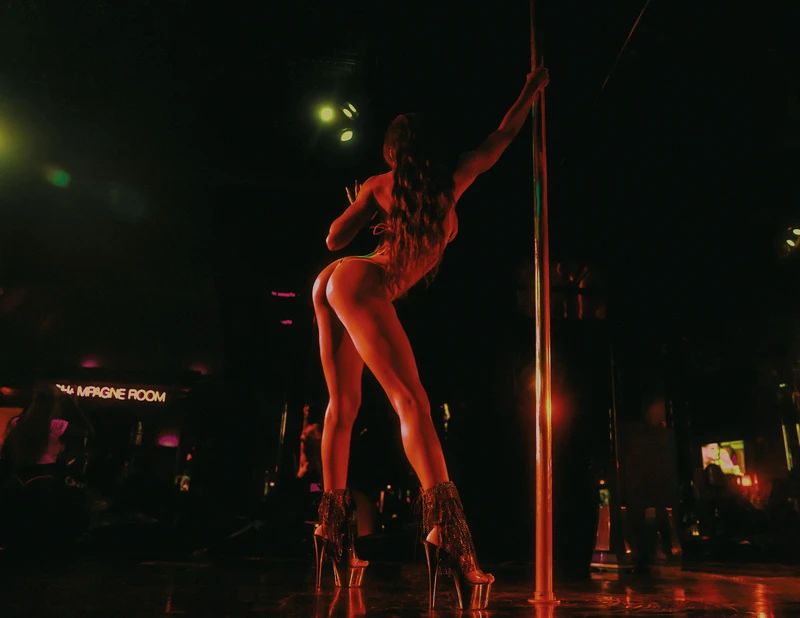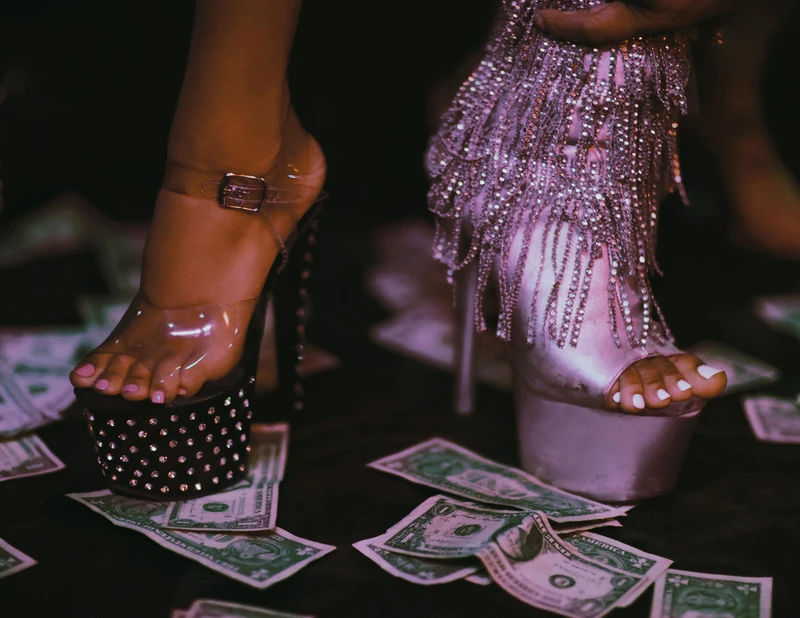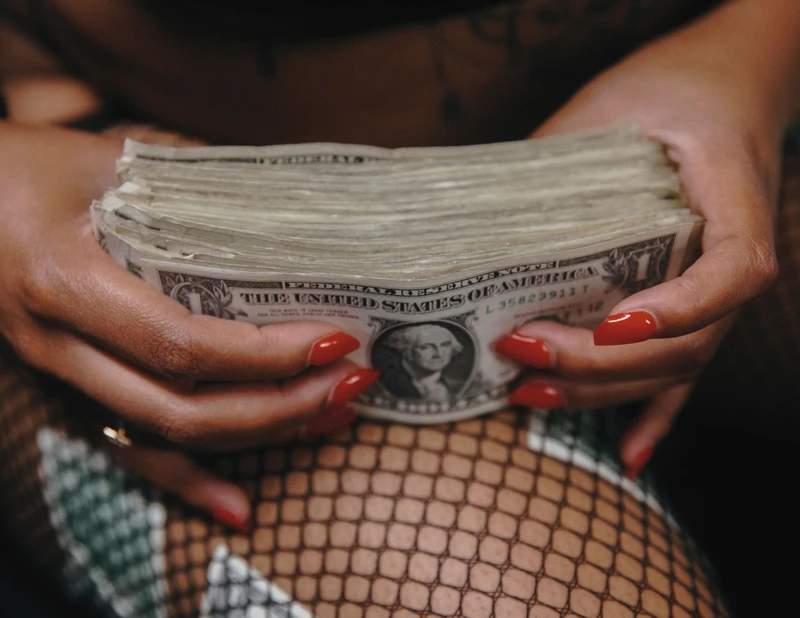
Adrienne Raquel’s latest photobook, ONYX, delves into the world of one of Texas’ most well-known strip clubs. Departing from her usual glossy studio work, Raquel’s photographs capture the neon-lit intensity, dynamism, and escapism of the club experience. Shooting in the club forced her out of her comfort zone, but the backstage portraits she captured ground this high-powered fantasy world in reality, showcasing the individuality and sisterhood of the strippers she got to know during the project. In our interview with the Houston native, Raquel discusses strip clubs, the absence of men in her work, and her mission to challenge preconceived notions.
VICE: How prevalent are strip clubs in Houston? Adrienne Raquel: Strip culture is deeply ingrained in the South and is a significant part of Houston life. The clubs are particularly busy on Thursdays, Fridays, and Saturdays, with money raining down from the ceiling. While men are certainly present, a lot of women also attend to show support for the dancers. Strip clubs in Houston are more of a party after the party, with the club not coming to life until after 2AM.
How did you come to choose Club ONYX as your subject for the photobook? I’ve been intrigued by the idea of strip clubs for some time, but it wasn’t until I visited ONYX that my interest became more than just curiosity. My aunt came to Houston to celebrate her 50th birthday back in 2017, and we decided to check out ONYX on a whim. I went with my mom, my aunt, and some of her friends, and we spent about four or five hours there, getting a section, ordering bottles and food, and enjoying the atmosphere. It was such a unique experience, and my mom was in full protective mode, worrying about the dancers and their well-being. There’s definitely a taboo around strip clubs, but beyond that, there’s a certain energy and power dynamic that takes some getting used to. But as I observed the women at ONYX, I was struck by their confidence, how they commanded attention, and how they worked together to make money and support one another. I knew then that I wanted to document the club and its dancers one day, and the opportunity came years later.

As a studio photographer, I’m used to having control over every aspect of my shoots: lighting, mood, setting. But shooting in a strip club was a different experience altogether. I had to work with the light that was already there and capture the raw, unfiltered energy of the club.
Going into the club, I knew I had to shed my wallflower tendencies and be bold. I had to introduce myself to the dancers, explain my project, and ask for their consent to be photographed. Some of them were skeptical, and rightly so – they were there to work and make money, not to pose for a photographer. But once they saw that I was there to document their lives and tell their stories, they opened up to me.
I would arrive early, before the club opened, and capture backstage moments of the dancers getting ready: eating, texting, doing their makeup. As the night went on, the club would get busier and backstage would turn into a frenzy of activity. Some dancers would be elated because they were making lots of money, while others would be frustrated because they hadn’t made much despite working for hours. It was an intense and dynamic environment to be in, but I loved every minute of it.
The book is divided into two distinct categories – the glamorous and high-energy onstage performances that exude sexuality and money, and the more personal and intimate backstage portraits. Adrienne Raquel aimed to show the contrast between these two aspects of strip club life. Strip clubs are often thought of as places where women are objectified and where men hold all the power, but in reality, the women who work there are regular people with their own lives and problems. Behind the scenes, they talk about relationships and daily struggles, and some might not be in the mood to perform. By including the intimate backstage moments in her book, Raquel wanted to convey the real-life aspect of the strip club experience, which can often be overlooked in the fantasy of it all.
The decision to not include men in the images of ONYX was a deliberate one. As a Black woman photographer, capturing Black women through her female gaze has been a significant part of the photographer’s success. She wanted to showcase women’s power, sensuality, softness, and regalness in a beautiful light. For this project, the focus was solely on the ladies of ONYX. The photographer wanted to highlight their sisterhood, the sense of camaraderie, and to destigmatize stripping and sex work. Including men in the images would have shifted the focus away from the women and would have taken away from the curated, intentional feel of the project. It was important to the photographer to convey a specific message through her work.
When I first visited ONYX, I noticed the judgement and discomfort in the body language of my aunt’s friends. However, throughout the night, their perceptions changed. I wanted to challenge the common narrative or cliché that exotic dancers are low, money-hungry, and have no self-worth or self-esteem. Some women do it because they enjoy the attention or it helps them build their confidence.
Over the past decade or so, sex work has become more mainstream with shows and movies like P-Valley, Zola, and Hustlers. During my project at ONYX, I got to know eight or nine women on a deeper level and found they are multifaceted with dreams, fears, and worries like anyone else.
After exhibiting ONYX at Fotografiska, I received messages from people who attended with their moms or grandmothers and found it beautiful. I hope my work can change people’s perceptions and allow them to shift their perspectives about exotic dancing and sex work.
